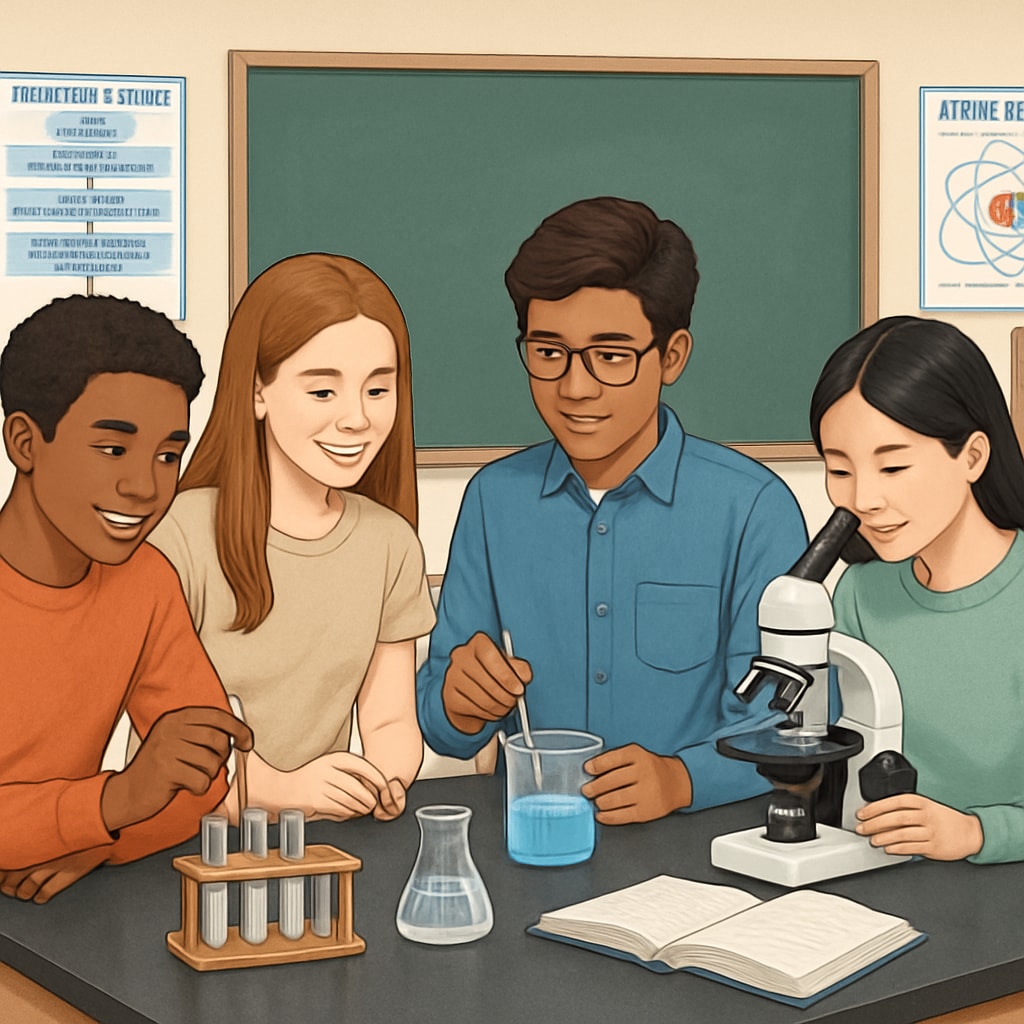In today’s increasingly diverse educational landscape, high school science teachers face the unique challenge of effectively supporting English learners (ELLs) in their classrooms. Creating an inclusive learning environment requires thoughtful strategies that address language barriers without compromising academic rigor. By incorporating differentiated teaching methods and fostering equitable participation, educators can ensure that multilingual learners thrive in science education.

Understanding the Needs of Multilingual Learners
Multilingual learners bring rich cultural and linguistic diversity to classrooms, but they often encounter obstacles when learning complex scientific concepts in a second language. For example, science education frequently involves specialized terminology, abstract concepts, and detailed instructions, which can be overwhelming for students still developing proficiency in English. As a result, addressing these challenges requires both linguistic and pedagogical adjustments.
To support ELLs, educators should first assess their language proficiency and prior knowledge in science. This information can inform differentiated instruction tailored to each student’s needs. According to learning theory, scaffolding—providing temporary support—can be particularly effective in helping students bridge gaps in understanding.
Practical Strategies for Inclusive Science Teaching
Implementing inclusive teaching strategies is key to ensuring that multilingual learners engage fully in science education. Below are several practical approaches:
- Visual aids and diagrams: Use images, charts, and graphs to illustrate scientific concepts, providing non-verbal cues that complement verbal explanations.
- Collaborative learning: Encourage group activities and peer discussions, allowing ELLs to practice language skills in a supportive environment.
- Bilingual resources: Provide textbooks, glossaries, or online tools in students’ native languages alongside English materials.
- Hands-on experiments: Engage students with interactive activities that demonstrate science principles without relying solely on verbal instructions.
- Modified assessments: Design tests and assignments that focus on comprehension rather than language proficiency.
These strategies not only support language development but also foster a sense of belonging and confidence among multilingual students.

Creating a Positive and Equitable Classroom Environment
Ensuring equity in science education involves more than just addressing language barriers. Teachers must also create a classroom culture that values diversity and avoids discriminatory practices. For example, educators should be mindful of implicit biases that may affect their interactions with ELLs. Demonstrating cultural sensitivity and celebrating students’ unique perspectives can enhance their engagement and participation.
Additionally, integrating multicultural examples into science lessons can make the subject matter more relatable. For instance, discussing scientific contributions from diverse cultures highlights the global nature of science and inspires students to see themselves as part of the scientific community. As noted by Britannica, multicultural education plays a critical role in fostering inclusivity.
By prioritizing equity and inclusion, educators can transform science classrooms into spaces where all learners, regardless of their linguistic backgrounds, feel supported and empowered.
Conclusion: Building Bridges Through Science and Language
Supporting English learners in high school science classrooms is both a challenge and an opportunity. By implementing differentiated teaching strategies, leveraging multilingual resources, and fostering a positive classroom environment, educators can help students overcome language barriers and excel in science education. These efforts not only enhance academic outcomes but also prepare multilingual learners to contribute meaningfully to the broader scientific community.
As schools continue to embrace diversity, the role of science teachers in bridging linguistic gaps becomes increasingly important. Through thoughtful planning and inclusive practices, educators can ensure that language differences become assets rather than obstacles in the pursuit of scientific understanding.
Readability guidance: Use concise paragraphs and bullet points to summarize key strategies. Maintain a conversational yet professional tone. Distribute transition words evenly to enhance flow and coherence.


